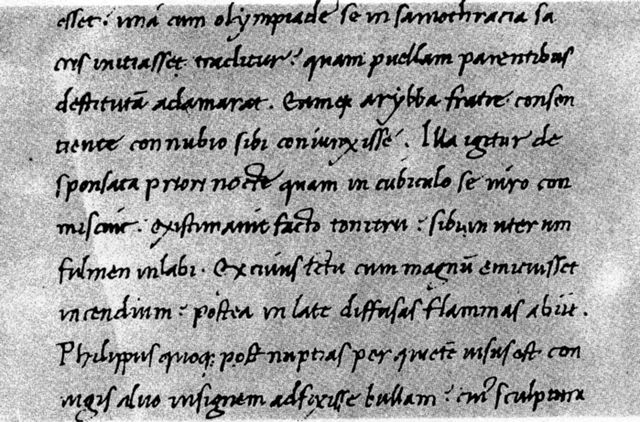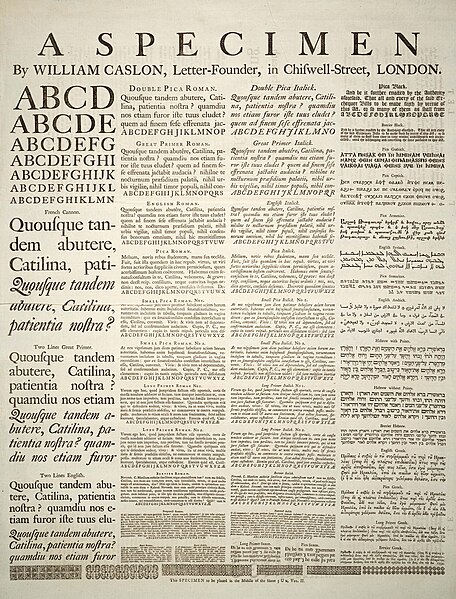In typography, italic type is a cursive font based on a stylised form of calligraphic handwriting. Along with blackletter and roman type, it served as one of the major typefaces in the history of Western typography.
Aldus Manutius' italic, in a 1501 edition of Virgil. Italic is only used for the lower case and not for capitals.
Sample of Niccoli's cursive script, which developed into Italic type.
Catherine of Siena, Epistole ("Letters"), published in Venice by Aldo Manuzio in September 1500: illustrated table in which appear the first words ever printed in italics: iesus, inside the heart in the left hand and iesu dolce iesu amore inside the book in the right hand.
A page from La Operina by Ludovico Vicentino degli Arrighi, showing early "chancery italic" typeface
Typography is the art and technique of arranging type to make written language legible, readable and appealing when displayed. The arrangement of type involves selecting typefaces, point sizes, line lengths, line spacing, letter spacing, and spaces between pairs of letters. The term typography is also applied to the style, arrangement, and appearance of the letters, numbers, and symbols created by the process. Type design is a closely related craft, sometimes considered part of typography; most typographers do not design typefaces, and some type designers do not consider themselves typographers. Typography also may be used as an ornamental and decorative device, unrelated to the communication of information.
Movable type being assembled on a composing stick using pieces that are stored in the type case shown below it
A sixteenth century workshop in Germany showing a printing press and many of the activities involved in the process of printing
A specimen sheet by William Caslon shows printed examples of Roman typefaces.
Nineteenth century wanted poster for John Wilkes Booth (the assassin of U.S. President Abraham Lincoln) printed with lead and woodcut type, and incorporating photography








